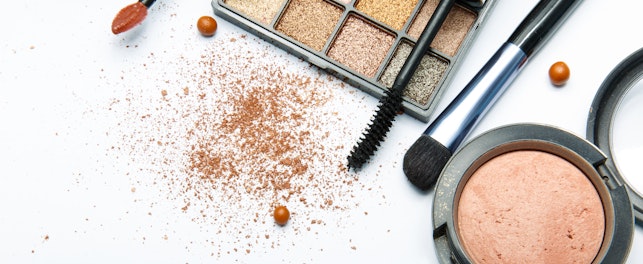Feminine hygiene products and diapers touch our most sensitive body parts and yet most of us do not think about the chemicals they could contain. We look at the growing concerns over observed trace chemicals and the release of the new Edana Method NWSP360 Series for testing absorbent hygiene products (AHP).
The average woman will use between 12,000 and 15,000 tampons, pads and panty liners during her lifetime.1 The average baby will go through 5,353 diapers as it grows up.2 While most women are aware of the potential hazards associated with using tampons incorrectly –Toxic Shock Syndrome, etc. – and all parents know about diaper rash, it is surprising how few consumers know what substances are actually in these products.
A Growing Cause for Concern
In March 2016, the French National Institute of Consumer Affairs published a report in 60 Millions de Consommateurs which showed that toxic substance residues had been detected in intimate hygiene products.3 Then, in 2017, they reported the presence of a wide variety of chemicals in baby diapers – including pesticides, dioxins, furans, polycyclic aromatic hydrocarbons (PAHs) and volatile organic compounds (VOCs).4
In response, the French Directorate General for Health (DGS) and the Directorate General for Competition Policy, Consumer Affairs and Fraud Control (DGCCRF) made a formal request in April 2016 to the French Agency for Food, Environmental and Occupational Health & Safety (ANSES), asking them to conduct an expert appraisal into the issue of safety in feminine hygiene products.5 In January 2017, a similar request was issued in relation to baby diapers. This study was to cover safety in terms of risk of infection, allergy or intolerance and/or the risks associated with chemical action via dermal contact and contact with the mucous membranes.6
Since then, concerns have been raised in other markets and, in January 2020, the European Chemicals Agency (ECHA) called for evidence for a proposed restriction of substances of concern in single-use nappies for infants and children.7
What chemicals have been detected?
Concerns have been raised relating to a wide variety of hazardous substances in AHP. The ANSES request to the ECHA concerning diapers is to look at PAHs, dioxins, furans, dioxin-like polychlorinated biphenyls (DL-PCBs), and formaldehyde, as well as the:
- Sum of the above dioxins and furans
- Sum of the above DL-PCBs
- Sum of the dioxins, furans and DL-PCBs
Published in June 2018, ANSES Opinion No. 2016-SA-0108 on the safety of feminine hygiene products found, “suspected endocrine disruptors (Lilial®, PAHs, DnOP (di-n-octyl phthalate), lindane, hexachlorobenzene, quintozene, dioxins and furans). Other substances are regarded as known or suspected skin sensitizers (benzo[a]pyrene and quintozene have been classified as Skin Sensitizer Category 1 by the CLP (Classification, Labeling and Packaging) Regulation, CLP classification proposals have been made by certain notifiers for Lilial® and DnOP).”8
While concerns are being raised over the discovery of these substances in feminine hygiene products and baby diapers, it should be recognized the observed chemicals remain at trace levels and so the products are safe when used correctly.
Testing options
Until recently manufacturers relied on one of two testing strategies for AHP:
- Harsh Extraction Method – using an organic solvent. It provides intrinsic quantification and is still useful for long-term monitoring and studies on single materials. Negatives for this method include the risk of feeding the ‘LOQ race’, and it does not reflect real-life usage
- ANSES/SCL methods (2.2) – using urine simulant extraction. Negatives for this method include the fact it is only used by the authorities in France. There is also a risk of overestimation without a correction factor (e.g. real Reflux), there is no standardized simulating pressure, and it can provide few achievable LOQs. Finally, it can only practically be used for size three diapers
Edana Method NWSP360 Series
In November 2020, Edana, the nonwoven industry association, released the Edana Method NWSP360 series.9 Linked to the Edana AHP Stewardship program, which focuses on the detection of trace chemicals in AHP, this series was developed by a panel of industry experts seeking to create a realistic, practical, robust, repeatable and reproducible test method.10
The series has multiple advantages over the two older methods. Firstly, it is applicable across a broad spectrum of products and markets. Secondly, it has been proven to deliver consistent, reliable results, within the operating parameters of the method. This makes it repeatable and reproducible, given the testing facility has the correct expertise. Finally, it reflects typical consumer usage and is therefore more relevant to real-life use.
The final version of the method will cover all forms of AHP.
SGS solution
Consumers want reassurance that the products they use are safe. The identification of the presence of trace chemicals in AHP means regulatory authorities and consumers are now taking a closer look at what is in diapers and feminine hygiene products.
SGS has worked closely with other stakeholders to ensure it has the latest testing solutions in place to help manufacturers supply safe, performant, and regulatorily compliant products to their customers all over the world. In the end, it’s only trusted because it’s tested.
Learn more about SGS Tissue and Hygiene Services.
View our webinar: Safety of Absorbent Hygiene Products – Testing for Trace Chemicals.
For more information, please contact:
Cédric Schoorens
Technical Manager – Hygiene Division
t: +33 (0)2 32 18 81 54
Audrey Guibet
CPCH Expert
t: +33 (0)2 32 18 81 54
References
1 Are American women turning to reusable and greener menstrual products due to health and environmental pollution concerns?
2 Average Diapers per Day
3 Tampons et protections féminines : une réglementation s’impose
4 Des résidus toxiques dans les couches pour bébés !
5 Safety of feminine hygiene products
6 Safety of baby diapers
7 The Belgian Market With Regard To Organic Residues In Tampons Sanitary Napkins & Call for evidence on possible restriction of substances of concern in single-use nappies for infants and children
8 Safety of feminine hygiene products
9 The relevant test methods
10 EDANA AHP Stewardship Programme to give consumers further assurances about the safety of the products



